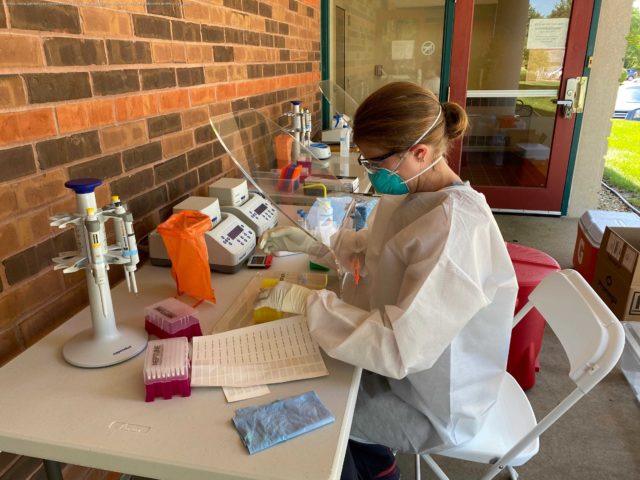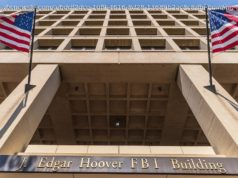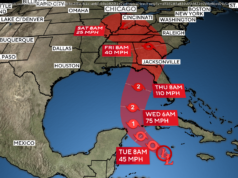One major reason COVID-19 is raging out of control across much of the country: the current system of testing catches only a tiny fraction …
One major reason COVID-19 is raging out of control across much of the country: the current system of testing catches only a tiny fraction of people while they are contagious. It’s now clear as many as 40% of people who contract the coronavirus that causes the disease don’t know they have it. Others are contagious a few days before they know they’re sick. If more people knew when they were infectious, they would likely stay home and not pass on the virus, slowing or even stopping the outbreak. But the test that’s most commonly used to diagnose COVID-19, known as a PCR test, requires analysis in a lab using expensive equipment. With the current surge in cases in Southern and Western states, and a shortage of supplies to run the tests, it routinely takes three to five days – often a week or longer – to return results. More than 750,000 tests are conducted a day in the United States with more than 50,000 new positives nearly every day this month. A growing chorus of scientists argue that while PCR may be a good tool in hospitals to identify precisely how much virus a patient is carrying, it’s not enough to stop the pandemic. Instead, people need to know they’re contagious when they’re contagious, which means they should be tested at least a few times a week. «That could be one of our most important interventions as we come into the fall to prevent large outbreaks from happening,» said Stephen Kissler, a research fellow at the Harvard T. H. Chan School of Public Health. «I’m on board with (this) thinking,» agreed Dr. Benjamin Pinsky, medical director of the clinical virology laboratory at Stanford University. «I think that would be quite useful.» Someone who tests negative could visit an aging parent or grandparent without worrying about risking their lives. Teachers could walk into their classrooms with confidence, knowing that no one was harboring the virus. The dental chair would get a little less scary. «We still are not in a circumstance where we have quick turnaround diagnostics the way we need,» Dr. Francis Collins, director of the National Institutes of Health said in Friday webinar. A rapid, low-cost diagnostic is technologically feasible and getting closer to reality. At Massachusetts Institute of Technology, researchers are collaborating with a team at 3M to develop and scale such a test. Before the pandemic, MIT chemical engineer Hadley Sikes had developed prototypes to detect malaria, tuberculosis and dengue. If one for COVID-19 works, it could deliver results within 10 minutes. All someone would need to do is add a bodily fluid to a specially made piece of paper that changes color to indicate a positive or negative. No formal training or fancy machines needed. The National Institutes of Health is supporting development of this test and others with money, daily advice and a Shark-Tank-like competition, Sikes said.






